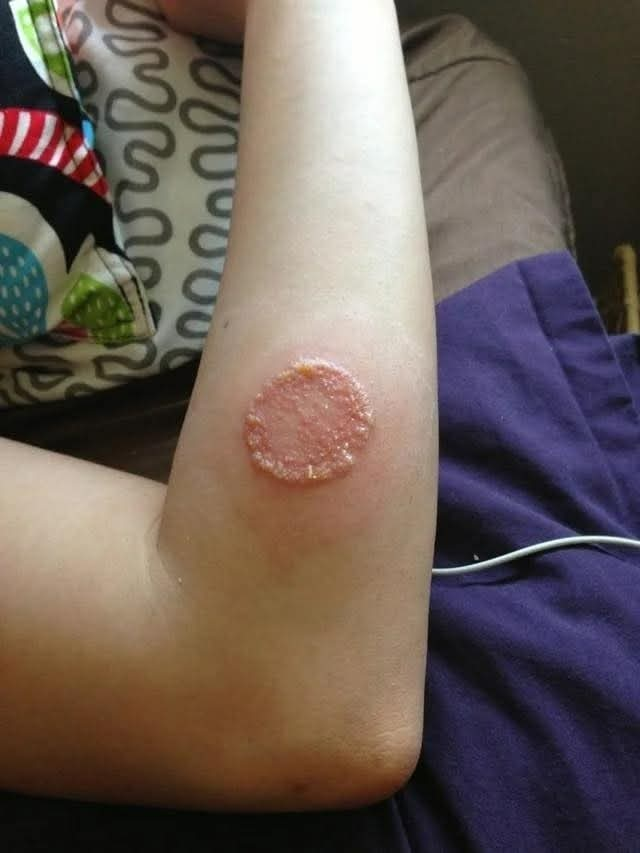Acute Sweet Syndrome: A Rare Reaction to a Routine Inhaler Switch
A recent clinical case report highlights a rare but important adverse reaction that primary care providers should be aware of: **acute-onset Sweet syndrome** following initiation of a new inhaled medication. While inhalers are generally safe and well-tolerated in patients with COPD, this case serves as a reminder that even routine medication changes can occasionally trigger **unexpected immune-mediated responses**.
🔍 What Is Sweet Syndrome?
Sweet syndrome, also known as **acute febrile neutrophilic dermatosis**, is a rare, inflammatory skin condition characterized by:
- Sudden onset of **painful, red or purplish skin plaques or nodules**.
- Often accompanied by **fever** and **elevated inflammatory markers**.
- Histopathology shows **dense infiltration of neutrophils** in the dermis **without vasculitis**.
Common Triggers Include:
- ✅ Infections (e.g., upper respiratory infections)
- ✅ Malignancies (e.g., hematologic cancers like AML)
- ✅ Autoimmune diseases (e.g., IBD, lupus)
- ✅ Medications (e.g., G-CSF, certain antibiotics, NSAIDs)
📌 **Importantly:** Drug-induced Sweet syndrome accounts for up to **12% of cases**—though typically linked to systemic agents, not inhaled therapies.
📋 Case Overview: Surprising Reaction to Inhaler Change
Patient Profile & Clinical Change:
A **55-year-old female** with a history of stable **COPD** was transitioned from her long-standing formoterol inhaler to a new **dual bronchodilator combination: indacaterol/glycopyrronium** (a long-acting beta-agonist + anticholinergic) due to declining lung function.
Presentation:
Just **48 hours** after starting the new inhaler, she developed:
- Rapid onset of **tender, bright erythematous plaques** on the **face and neck**.
- Mild fever (**37.9°C / 100.2°F**).
- **No** joint pain, respiratory worsening, or mucosal involvement.
🧪 Diagnostic Workup & Confirmation:
Initial suspicion of infection or allergy led to a thorough workup:
- **CBC:** Normal WBC, **mild neutrophilia**.
- **Inflammatory Markers:** **Elevated CRP and ESR**.
- **Infection Screens:** Negative (cultures, throat swab).
- **Skin Biopsy:** Dense neutrophilic infiltrate in dermis, no vasculitis—**consistent with Sweet syndrome**.
✅ **Diagnosis:** Drug-induced Sweet syndrome, likely triggered by the new **indacaterol/glycopyrronium** inhaler.
💊 Why This Case Stands Out
This case is significant because it may represent one of the first reported instances of Sweet syndrome associated with an **inhaled dual bronchodilator**. Although neither component has been definitively tied to the syndrome before, both are pharmacologically active and **absorbed systemically to some degree**.
Mechanism Hypothesis:
The rapid onset suggests an **immune-mediated hypersensitivity reaction**—possibly through cytokine activation or neutrophil recruitment triggered by the drug components.
✅ Management & Outcome:
Immediate management included **discontinuation of the new inhaler** and a short course of **oral prednisone** (40 mg/day, tapered). The result was swift:
-
Skin lesions **resolved within 72
hours**.
- Fever subsided.
- No recurrence at 3-month follow-up.
🚨 Key Takeaways for Clinicians
This case highlights the importance of patient-reported symptoms and vigilance, even with seemingly benign treatments.
- ✅ **Monitor Closely:** Even “routine” inhaler switches can have rare systemic side effects.
- ✅ **Consider Sweet Syndrome:** Include it in the differential for acute dermatoses, especially with **fever and neutrophilia**, even when systemic drugs aren’t involved.
- ✅ **Biopsy is Key:** It differentiates Sweet syndrome from look-alikes like cellulitis, vasculitis, or erythema multiforme.
- ✅ **Early Discontinuation is Crucial:** Symptoms often resolve quickly once the trigger is removed.
❌ Debunking Misconceptions
- **❌ “Only oral or IV drugs cause Sweet syndrome”**
False—systemic absorption of inhaled meds can still provoke immune reactions. - **❌ “It’s just a rash—treat with antibiotics”**
A dangerous error—misdiagnosis leads to unnecessary antibiotics and delayed, proper care. - **❌ “All rashes after inhalers are allergies”**
Not true—could be irritation, infection, or non-allergic immune reactions like this one.
This case reminds us that even familiar treatments can carry unfamiliar risks. While indacaterol/glycopyrronium remains a safe and effective option for most COPD patients, this rare event highlights the need for **vigilance in primary care**.
When a patient reports sudden, unexplained symptoms shortly after a medication change—especially involving skin, fever, or inflammation—consider the possibility of drug-induced syndromes, even with inhaled agents.
Because real medicine isn’t just about protocols. It’s about paying attention to patterns—and acting before small signals become big problems. And sometimes, the most powerful tool in healthcare? **It’s curiosity—paired with care.**
